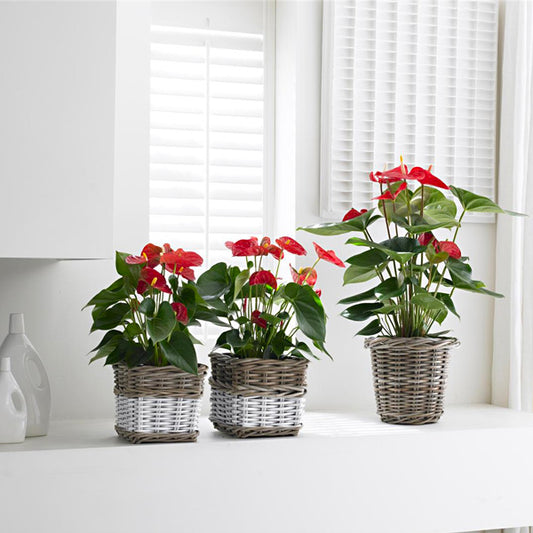Bulbophyllums are a pan tropical genus found across the tropics in all continents except Europe with the maximum concentration in South East Asia. New Guinea alone has about 700 species within its borders. They have a pseudo-bulb with a single leaf attached to its terminal end. Each psuedobulb is separated from the next one by a considerable distance. The inflorescence arises from the base of the pseudobulb and usually carries flowers with a foul smell. Cirrhopetalums and Trias are associated genera that require similar growing conditions.
Light
Bulbophyllums will do well without direct sunshine and only in bright light conditions. Give them enough light so that their leaves are a nice apple green in colour. They will grow ideally in lighting varying from that required for Phalaenopsis to that of Cattleya.
Water
Since Bulbophyllums come from the tropics, they go through at least one very distinct wet season. Bulbophyllums do well in mounted condition. They require spraying of water every day. Shriveled pseudobulbs can indicate the plant is being under watered. In such cases, you could spray twice a day. Reduce the frequency of spraying in winter depending on the humidity and temperature.
Humidity
They will do best with humidity upwards of 50%. Even the ones that are found in the lowlands and go dry for about 2 months in winter are found in regions that enjoy a high humidity. Yet some others can be found in cloud forests where they are constantly misted by the condensation of water droplets around them. In an artificial setting bulbophyllums will grow to their full potential if a misting setup can be arranged.
Temperature
No definite temperature range can be given for this alliance as there are lowland and species from the mountains.
Potting and Fertilizer
Bulbophyllums are ideally grown mounted as they will tend to jump out of pots quickly giving an unsightly result. They can also be mounted or grown in boxes made out of plastic mesh with very coarse media. They tend to multiply quite fast producing a specimen sized plant over a short period. Fertilizing can be done using HighGrow fertilizer that can be fed to them about once a week throughout the year. Most of them will bloom only once a year around springtime and can be fed with a HighBloom fertilizer at the recommended concentration during this time.

